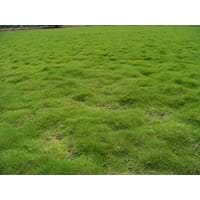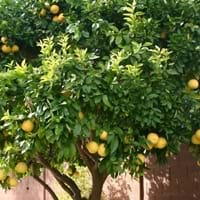Life Span
Perennial
Perennial
Origin
South-Eastern Asia, Asia
South Asia, Southeast Asia
Types
Korean Lawngrass , Meyer Zoysiagrass , Manilagrass
Not Available
Number of Varieties
Not Available
Habitat
Lower slopes, Sandy stream banks
Mediterranean region
USDA Hardiness Zone
8-11
8-10
AHS Heat Zone
12 - 9
Not Available
Sunset Zone
H1, H2, 8, 9, 12, 13, 14, 15, 16, 17, 18, 19, 20, 21, 22, 23, 24
Not Available
Habit
Clump-Forming
Spreading
Minimum Width
Not Available
Flower Color
Green, Light Green
White
Flower Color Modifier
Bicolor
Bicolor
Fruit Color
Non Fruiting Plant
Green, Lemon yellow, Yellow
Leaf Color in Spring
Light Green, Dark Green
Green
Leaf Color in Summer
Light Green
Green
Leaf Color in Fall
Green, Yellow green, Gold
Dark Green
Leaf Color in Winter
Gold, Tan
Dark Green
Leaf Shape
Grass like
Ovate
Plant Season
Spring, Summer, Fall, Winter
All year
Sunlight
Full Sun, Partial Sun
Full Sun
Growth Rate
Very Slow
Medium
Type of Soil
Loam, Sand
Rich
The pH of Soil
Acidic, Neutral, Alkaline
Acidic
Soil Drainage
Average
Well drained
Bloom Time
Not Available
Spring, Summer
Tolerances
Drought, Salt, Soil Compaction
Full Sun
Where to Plant?
Ground
Container, Ground
How to Plant?
Sod, Sprigging or Stolonizing
Divison, Seedlings
Plant Maintenance
Medium
High
Watering Requirements
weekly regular
Reduce watering once fruit are growing, Water daily during growing season
In Summer
Lots of watering
Lots of watering
In Spring
Moderate
Moderate
In Winter
Average Water
Average Water
Soil pH
Acidic, Neutral, Alkaline
Acidic
Soil Type
Loam, Sand
Rich
Soil Drainage Capacity
Average
Well drained
Sun Exposure
Full Sun, Partial Sun
Full Sun
Pruning
Remove damaged leaves, Remove dead branches, Remove dead leaves
Prune to control growth, Remove dead branches
Fertilizers
All-Purpose Liquid Fertilizer
Fertilize in early to mid-summer, for fruiting plants, use high phosphorous content fertilizer
Pests and Diseases
Army-worms, sod webworms
Aphids, Citrus foot rot, Citrus gummosis, Citrus leaf miner, Red blotch
Plant Tolerance
Drought
Full Sun
Flowers
Insignificant
Yes
Flower Petal Number
Single
Double, Semi-Double
Foliage Texture
Fine
Coarse
Foliage Sheen
Matte
Glossy
Attracts
Crickets
Ants, Birds
Allergy
Not Defined
Anaphylaxis, Cough, Nausea, Rhinitis, Stomach pain, Swelling, Urticaria, Vomiting, wheezing
Aesthetic Uses
Beautification, Cottage Garden, Farmland, Ground Cover, Landscape Designing
Farmland, Showy Purposes
Beauty Benefits
Not Available
Acne, Good for skin, Good for the Scalp, Improve skin tone, Moisturizing, Strong, beautiful hair
Environmental Uses
Provides ground cover, soil erosion prevension on hill slopes
Food for animals, Very little waste
Medicinal Uses
Unknown
anti-cancer, constipation, Digestive, Gastrointestinal disorders, Gout, Immunity, Jaundice, Respiratory Disorders, Rheumatoid arthritis, scurvy, Ulcers, Urinary problems, Weight loss
Part of Plant Used
Whole plant
Fruits
Other Uses
Used as a golf course turf
Cosmetics, Used as a flavouring in food, Used As Food, Used for its medicinal properties
Used As Indoor Plant
Insignificant
No
Used As Outdoor Plant
Yes
Yes
Garden Design
Container, Edging, Groundcover, Lawns and Turf, Mixed Border, Rock Garden / Wall, Tropical
Edible, Fruit Tree, Tropical
Botanical Name
ZOYSIA tenuifolia
Citrus limetta
Common Name
Korean Velvet Grass
sweet lime, sweet lemon, sweet limetta
In Hindi
कोरियाई मखमल घास
मौसम्बी
In German
Korean Samt Gras
süße Limone
In French
herbe de velours coréenne
Citrus limetta
In Spanish
hierba de terciopelo de Corea
limetta dulce, limón dulce mediterráneo, limón dulce y lima dulce
In Greek
hierba de terciopelo de Corea
γλυκό ασβέστη
In Portuguese
grama de veludo coreano
doce de limão
In Polish
Not Available
słodkie limonki
In Latin
Carl herba
dulcis ad cinerem
Phylum
Angiosperms
Magnoliophyta
Class
Monocotyledonae
Magnoliopsida
Order
Cyperales
Sapindales
Genus
Zoysia Willd
Citrus
Clade
Commelinids
Not Available
Tribe
Cynodonteae
Citreae
Subfamily
Chloridoideae
Citroideae
Importance of Korean Velvet Grass and Sweet Lime
Want to have the most appropriate plant for your garden? You might want to know the importance of Korean Velvet Grass and Sweet Lime. Basically, these two plants vary in many aspects. Compare Korean Velvet Grass and Sweet Lime as they differ in many characteristics such as their life, care, benefits, facts, etc. Every gardener must at least have the slightest clue about the plants he wants to plant in his garden. Compare their benefits, which differ in many ways like facts and uses. The medicinal use of Korean Velvet Grass is Unknown whereas of Sweet Lime is anti-cancer, constipation, Digestive, Gastrointestinal disorders, Gout, Immunity, Jaundice, Respiratory Disorders, Rheumatoid arthritis, scurvy, Ulcers, Urinary problems and Weight loss. Korean Velvet Grass has beauty benefits as follows: Not Available while Sweet Lime has beauty benefits as follows: Not Available.
Compare Facts of Korean Velvet Grass vs Sweet Lime
How to choose the best garden plant for your garden depending upon its facts? Here garden plant comparison will help you to solve this query. Compare the facts of Korean Velvet Grass vs Sweet Lime and know which one to choose. As garden plants have benefits and other uses, allergy is also a major drawback of plants for some people. Allergic reactions of Korean Velvet Grass are Not Defined whereas of Sweet Lime have Anaphylaxis, Cough, Nausea, Rhinitis, Stomach pain, Swelling, Urticaria, Vomiting and wheezing respectively. Having a fruit bearing plant in your garden can be a plus point of your garden. Korean Velvet Grass has no showy fruits and Sweet Lime has showy fruits. Also Korean Velvet Grass is not flowering and Sweet Lime is flowering. You can compare Korean Velvet Grass and Sweet Lime facts and facts of other plants too.





